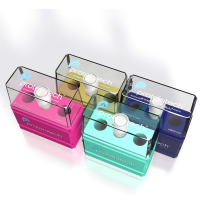Detection of RARs and RXRs in Cells and Tissues
Ligand-binding assays have been used extensively in the past to detect and characterize intracellular receptors. In fact, the mitial discoveries of the first known members of this family of proteins were achieved by the demonstration of binding of radioactively labeled hormonal ligands to the target tissues contaming receptors for those hormones (1 –5 ). Since then, ligand-binding assays have been used as a tool to characterize receptor-ligand interactions including determination of the affinities and specificities of the receptors for various ligands such as naturally occurring endogenous hormones as well as synthetic compounds including drugs. Ligand-binding assay methodologies include satubinding techniques and competition assays. Saturation binding is a method which requu-es a radiolabeled ligand and its receptor. This method used in combination with Scatchard analysis enables the direct measurement of dissociation constants (K d values), which are an indicator of the affinity of the receptor for the labeled ligand. Competition assays allow the determination of receptor-binding characteristics of compounds that are not radtolabeled by measuring the relative abilities of the unlabeled ligands to compete with a known, labeled ligand for binding to a receptor. Dissociation constants for these interactions can then be calculated by using the determined IC50 values (the concentration of unlabeled compound required to prevent 50% of the radiolabeled ligand from binding to the receptor). A variety of techniques have been developed to separate the receptor-bound ligand from unbound ligand in the sample (6 –8 ), which have been modified and improved over the years for each of the different intracellular receptors.
![预览]()






